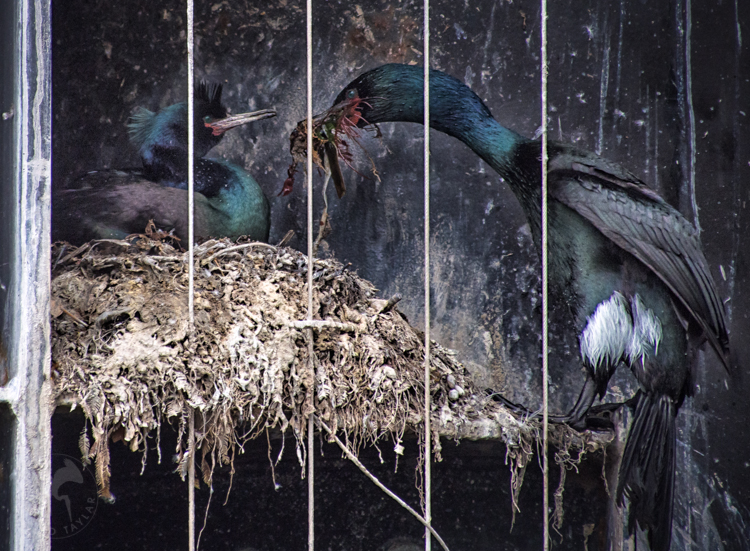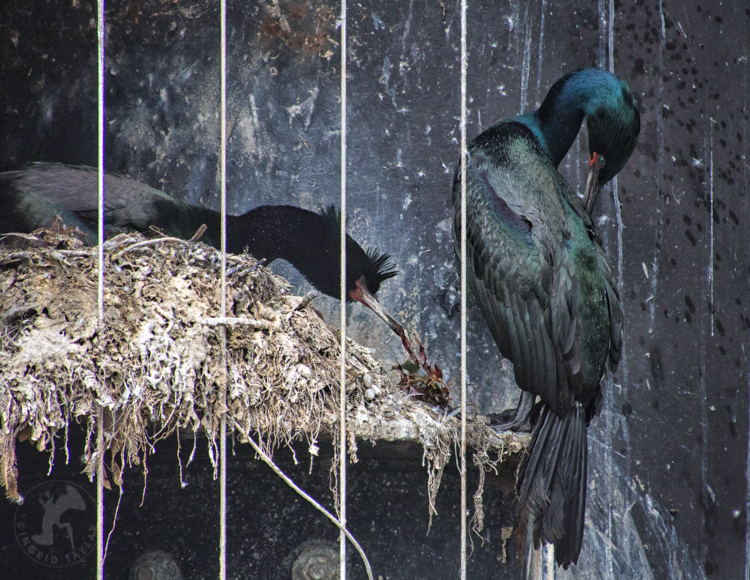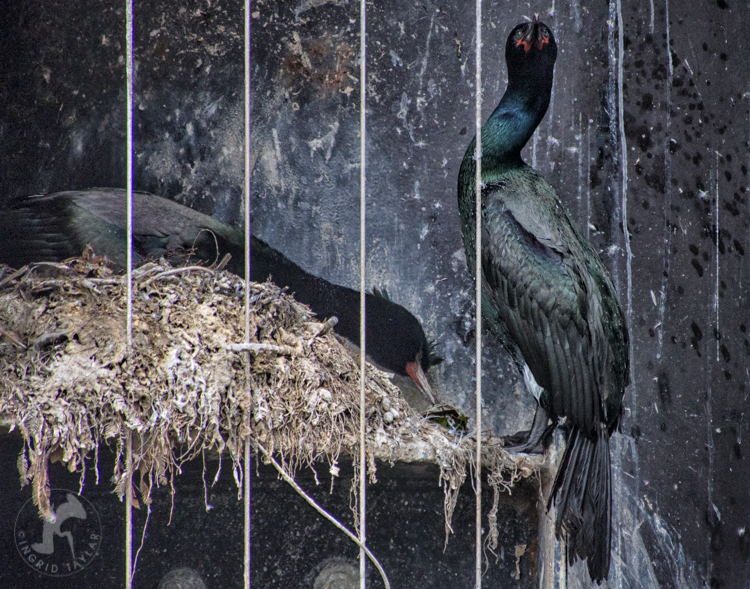I should stop making excuses for shooting in damp, dark conditions. It is, after all, the Pacific Northwest.
But, well … I was shooting in damp, dark conditions, standing on the car deck of a Washington State Ferry at Anacortes, in an ISO 5000 drizzle. Hugh — who’s become a better bird spotter than I am — pointed to the air traffic around the nearby terminal pilings. It was Pelagic Cormorant mania — a Babylon 5 space station for sea birds.
The flight path started at distant patches of seaweed which passing cormorants would pick off the water and carry back to their nesting towers. In the image below, a Pelagic Cormorant with characteristic white flanks, handed off a seaweed prize to his lady love. Since both male and female incubate, I’m not 100 percent sure of the sexes here, but the gift bringer did seem the larger of the two, which would suggest a male.

The cables in my photos might be exclusion cables to keep cormorants from doing precisely what they’re doing, or they may serve another purpose entirely. Either way, the cormorants are using the structure in ways that suit them fine. I hope this is one place they can stay, given the growing scarcity of safe nesting sites for these birds who normally prefer rocky cliffs to raise their young. While looking for information on this particular cormorant colony, I found photos of the site going back at least a few years, with one photo caption referring to the scene as a “cormorant condo.” That’s a perfect description.

After the seaweed drop, the female took the nesting material and spent time arranging it in the existing structure.

And then … the ferry took off … at a clip, I might add.
Monterey Bay Aquarium posted this cool fact about Pelagic Cormorants: “Pelagic cormorants will use one nest for several years, piling up seaweed, grass and ocean debris until the mound is five to six feet high.” They use their own guano to secure the nest on their chosen cliffs … or pilings.
If you haven’t heard Pelagic Cormorants vocalize, take a listen at the All About Birds site, in particular the moans and throat clatter clips.
[These images were all very dark, shot in less than ideal conditions. Adjustments include levels and exposure, and some color adjustment.]

Whatever they do, birds are so NOT boring! Meaning: they’re endlessly fascinating.
We humans can readily identify with avian activities, such as nest-building, as well as with the thoughts and feelings that surely underlie their actions.
The sounds the male makes are crazy cool, Ingrid. This listener is transported to the doorstep of a cozy cormorant condo. 🙂
A fascinating Cormorant Condo! I love seeing what birds do where they want to do it.
I enjoyed hearing the vocalizations! The throat clatter was especially entertaining. I love the sound of birds myself… We have several Mocking birds known for their night singing. When the windows are open in spring and fall it’s the best music to be lullabied to sleep with.
The Double-crested Cormorant live by me… It is amazing to watch them dive-bomb the water for food. And then they stand like statues with their wings spread to dry and bask in the sun. Never saw their nests though… Nor have I seen their iridescent feathers close up.
You took beautiful photos of them and their nest building skills! Just stunning these birds are!